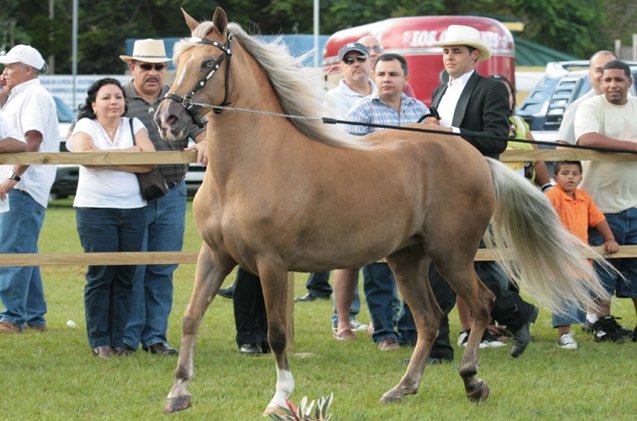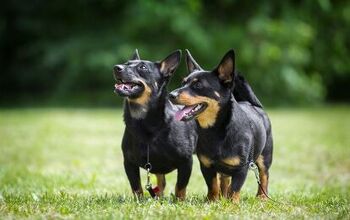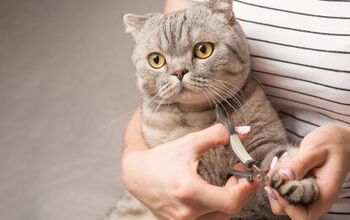Paso Fino Horse


About Paso Fino Horse
Although it is sometimes confused with the popular Peruvian Paso Horse, the Paso Fino Horse is actually its own breed.
Both the Peruvian Paso and Paso Fino breeds have the same roots, as they date back to the same set of horses that were brought to the Americas by Spanish conquistadors. The Spanish Jennet bloodline exists in both the Peruvian Paso Horse and the Paso Fino Horse, and both of these breeds were created for their beauty, strength, and stamina, but especially for their smooth and comfortable gait.
Paso Fino horses are known for their friendly, docile, and social personalities.
Historically, those horses that ended up traveling to Peru remained isolated there. But in Colombia and Puerto Rico, as well as other Latin American and Caribbean nations, another set of conquistador horses existed. Both sets of horses kept their uniquely smooth four-beat gait, but over time, they developed into different breeds. Also, the way that the horses execute the gait has become an important distinction between the Paso Fino Horse and the Peruvian Paso Horse.
The Paso Fino Horse’s ancestry includes the Spanish Jennet, which arrived with Columbus in the Dominican Republic, as well as the Andalusian and the Barb.
In the 1950s, the United States Army became impressed by the smooth and comfortable ride offered by the Paso Fino Horse, so they started importing the horses into the country. In 1972, the first national association was created for the Paso Fino, and it was named the Paso Fino Horse Association. Also known as PFHA, this association was set up to protect, improve, and promote the unique breed. It worked on organizing the importation, registration, showing, and breeding of these horses, and it also provided breeders with the opportunity to publicize this breed, which was once rare.
Paso Fino horses are known for their friendly, docile, and social personalities. Overall, they are gentle horses that are easy to handle and train, so they are excellent choices for those who are in search of an equine companion for pleasure, work, or horse shows.
These horses are also revered for their strong sense of loyalty to their owners and riders, as well as their companionship, so they are great choices for all levels of horse caretakers, owners, and riders.
You can expect that these horses will be affectionate and highly intelligent, and they will gladly spend plenty of time with you. Also, Paso Fino horses are ideal for adventurous riders, as they will learn rather quickly and will be willing to fearlessly try just about anything that their owners suggest.
The Paso Fino is a gentle horse that is easy to handle and train.
The Paso Fino does walk and canter, but it doesn’t trot. The breed has highly stylized, natural gaits that include the paso largo (which is the fastest), the paso corto (which has the speed of a trot and is the preferred gait), and the paso fino (which is the slowest).
Today’s Paso Fino is still a close representation of the Spanish Jennet, although breeds like the American Saddlebred, the Morgan, and the Arabian were added occasionally to the horse’s bloodline in order to increase its size over time.
This breed is medium in size, and it features a small head with widely set eyes. The shoulders can be seen sloping down, and the withers are of varying lengths and clean. The legs of this horse are sleek and strong, and the hooves are small. Many of these horses also have uncommonly large tails and manes.
Paso Fino horses are ideal for adventurous riders, as they are willing to fearlessly try just about anything that their owners suggest.
Paso Fino horses are beautiful animals that come in all equine markings and colors, such as palomino, pinto, black, roan, chestnut, gray, and bay.
Grooming your Paso Fino Horse is necessary on a consistent basis. Use every grooming session as an opportunity to ensure your horse will look its best, but also use it as some quality time to bond with your equine companion as well.
Your horse grooming kit should include equine shampoo, mane conditioner, a curry comb, a hard brush and a soft brush, a hoof pick, and a face brush. Start with the curry comb, which can be used to loosen up hair and dirt from the horse’s coat. Then utilize the soft brush in order to groom away everything that you loosened up with the curry comb. Use brushes specifically designed for the mane and tail to keep them looking healthy, and carefully use a hoof pick to remove dirt and debris from your horse’s hooves.
Photo credit: wendimatson/Bigstock; Arsdelicata/Wikimedia

Lisa Selvaggio is a freelance writer and editor, and our resident cats-pert, with certifications in pet nutrition and pet first aid. She enjoys producing content that helps people understand animals better so they can give their pets a safe and happy home.
More by Lisa Selvaggio

























